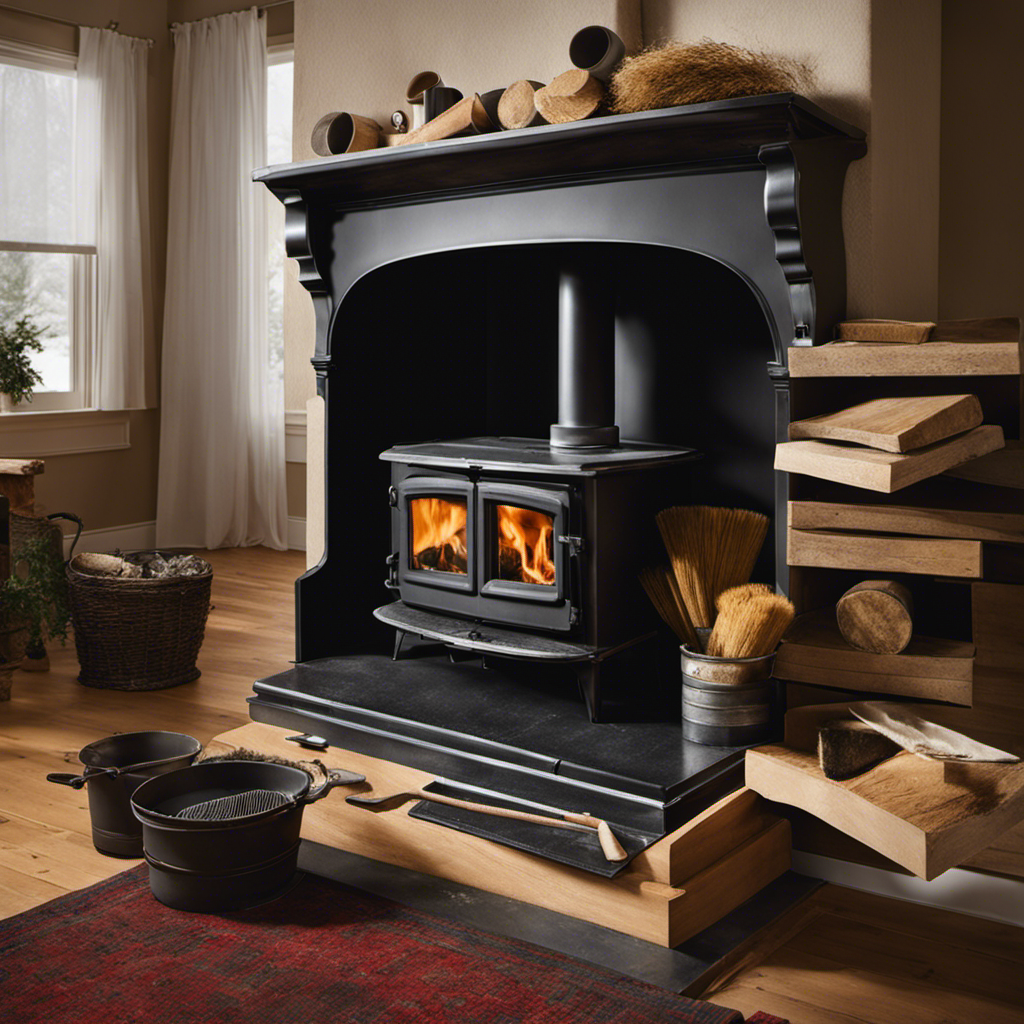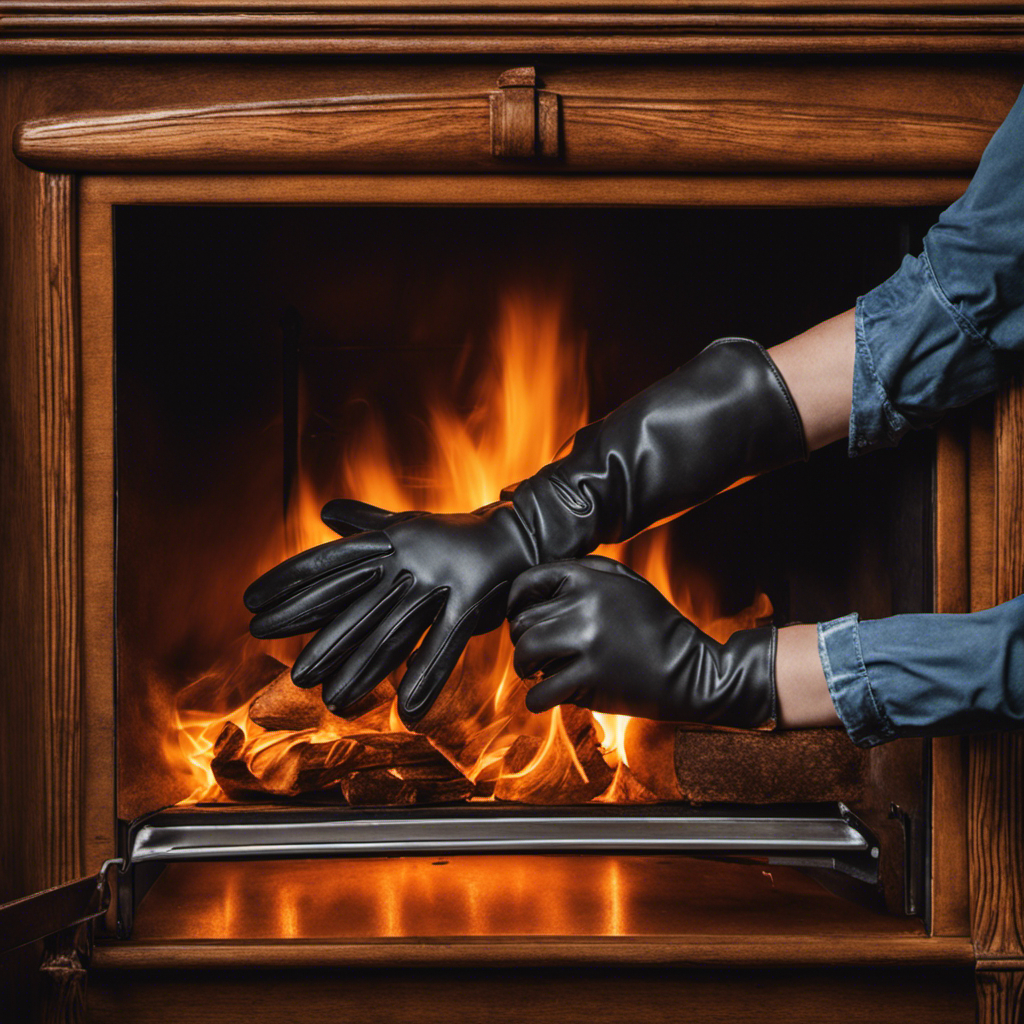Is it possible to use vinegar or other natural cleaning products to get rid of rust on my cast iron wood stove?
As an avid cast iron wood stove enthusiast, I know the frustration of dealing with rust.
But fear not, because I’m here to guide you through the process of restoring your beloved stove to its former glory.
In this article, I’ll share my expert tips and techniques for removing rust, restoring the appearance, and preventing future corrosion.
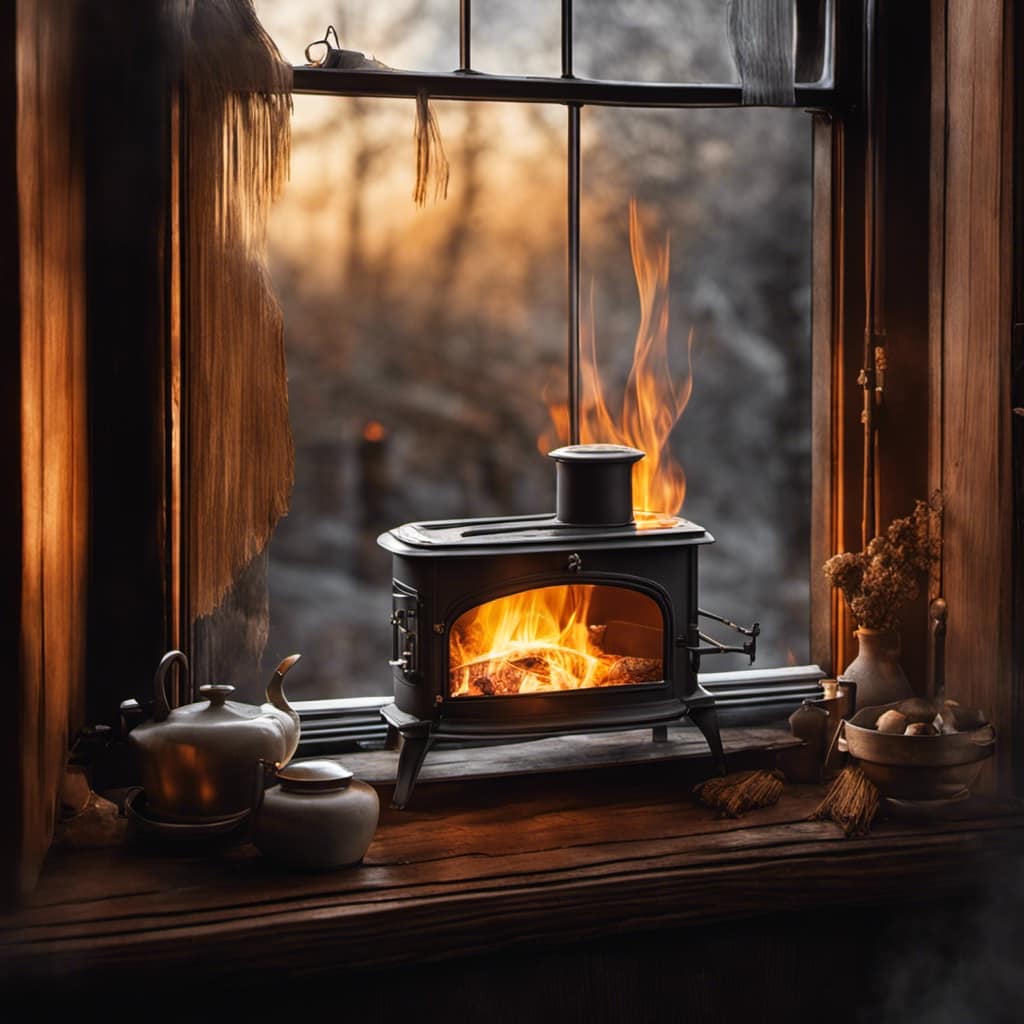
Get ready to say goodbye to that pesky rust and hello to a beautifully rejuvenated cast iron wood stove!
Key Takeaways
- Rust occurs when moisture comes into contact with the iron surface.
- Keeping the stove dry and clean helps prevent rust.
- Removing rust can be done using natural remedies like vinegar or commercially available rust removal products.
- Restoring the appearance of the stove can be achieved by applying high-temperature stove paint.
Understanding the Causes of Rust on Cast Iron Wood Stove
I need to understand the causes of rust on my cast iron wood stove so that I can effectively restore it.
Rust on cast iron is a common problem that occurs when moisture comes into contact with the iron surface. One of the most common misconceptions is that rust only forms on the outside of the stove. However, rust can also develop on the inside if the stove isn’t properly maintained.
Prevention methods include keeping the stove dry and clean, as moisture and debris can accelerate the rusting process. Regularly inspecting the stove for any signs of rust or damage is also important.

To effectively restore the stove, it’s crucial to remove all rust using a wire brush or sandpaper and then applying a high-temperature paint or stove polish to protect the iron surface from further corrosion.
Preparing Your Cast Iron Wood Stove for Rust Restoration
Before starting the rust restoration process, it’s important to properly prepare your cast iron wood stove by removing any ashes or debris. Cleaning techniques vary depending on the level of dirt and grime present on the surface.
I recommend using a wire brush or steel wool to scrub away loose debris and rust particles. Be sure to wear gloves and protective eyewear to avoid any injuries.
Once the stove is clean, it’s crucial to apply a protective coating to prevent future rust formation. There are various options available, including high-temperature paint or specialized stove polish. These coatings not only provide a barrier against rust but also enhance the appearance of your wood stove.

With the stove properly prepared, we can now move on to the next step: removing rust from your cast iron wood stove.
Removing Rust From Your Cast Iron Wood Stove
To effectively remove rust from your cast iron wood stove, start by mixing one part vinegar with three parts water in a spray bottle. This solution will act as a natural rust remover and is safe to use on cast iron surfaces. Spray the solution onto the rusted areas, making sure to cover all affected parts. Let it sit for about 10-15 minutes, allowing the vinegar to penetrate and loosen the rust.
Then, using a scrub brush or steel wool, gently scrub the rusted areas in a circular motion. Rinse the stove with clean water and dry it thoroughly.
Alternatively, there are also commercially available rust removal products specifically designed for cast iron restoration. These products often contain chemicals that can effectively dissolve rust and restore the appearance of your cast iron wood stove.
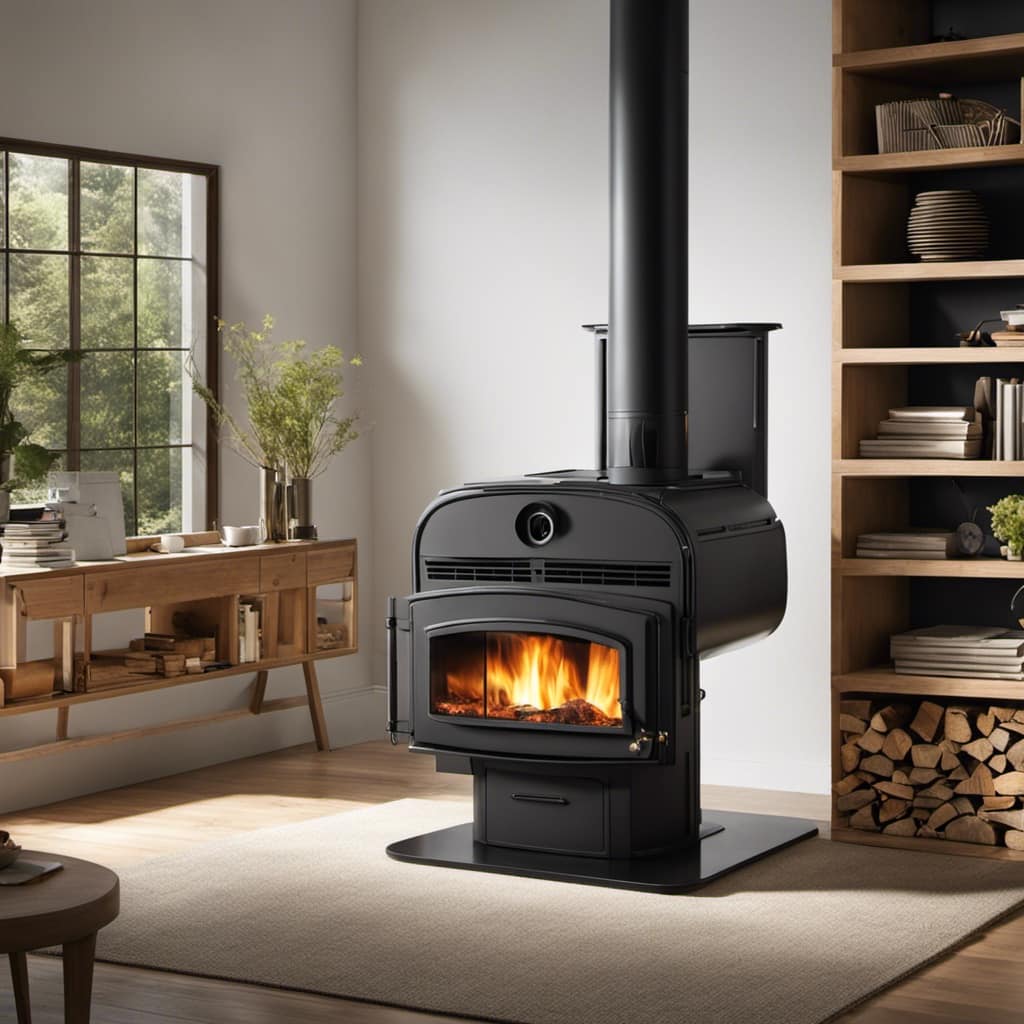
Transitioning into the next section about ‘restoring the appearance of your cast iron wood stove’, it’s important to note that after removing the rust, you may need to perform additional steps to bring back the stove’s original shine and luster.
Restoring the Appearance of Your Cast Iron Wood Stove
After removing the rust, I like to apply a thin layer of high-temperature stove paint onto the cast iron surface to restore the appearance of my wood stove. This restoration technique not only enhances the aesthetic appeal of the stove but also helps protect it from further corrosion.
Before applying the paint, it’s crucial to clean the surface thoroughly and ensure it’s completely dry. I prefer using DIY rust removal methods such as vinegar or a mixture of baking soda and water to get rid of the rust. These natural remedies are effective and environmentally friendly.
Once the rust is removed, I gently sand the surface to create a smooth base for the paint. The high-temperature stove paint provides a durable finish that can withstand the heat produced by the wood stove, ensuring long-lasting restoration results.
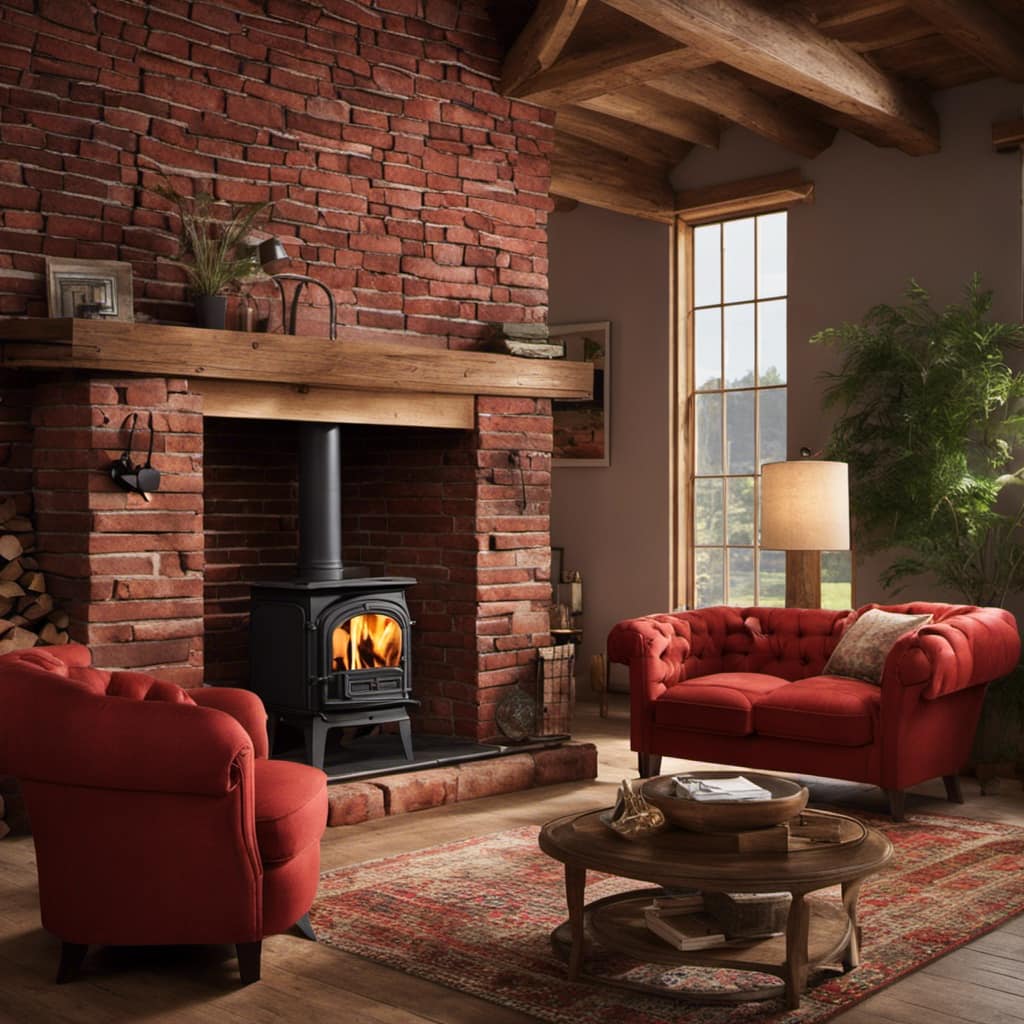
Maintaining and Preventing Future Rust on Your Cast Iron Wood Stove
Since I regularly inspect and clean my cast iron wood stove, I’ve been able to prevent future rust and ensure its longevity. Preventing corrosion is crucial in maintaining the efficiency and safety of the stove.
To achieve this, I use the right cleaning products specifically designed for cast iron. Firstly, I remove any loose debris or ash using a soft brush or cloth. Then, I apply a cast iron cleaner that’s non-abrasive and specifically formulated to remove rust and stains.
After cleaning, I thoroughly dry the stove to prevent any moisture from causing rust. Additionally, I regularly inspect the stove for any signs of rust or corrosion and address them promptly.
Frequently Asked Questions
Can I Use Regular Household Cleaning Products to Remove Rust From My Cast Iron Wood Stove?
Yes, regular household cleaning products can be used to remove rust from a cast iron wood stove. However, there are also natural rust removal methods available, such as using vinegar or a paste made from baking soda and water.
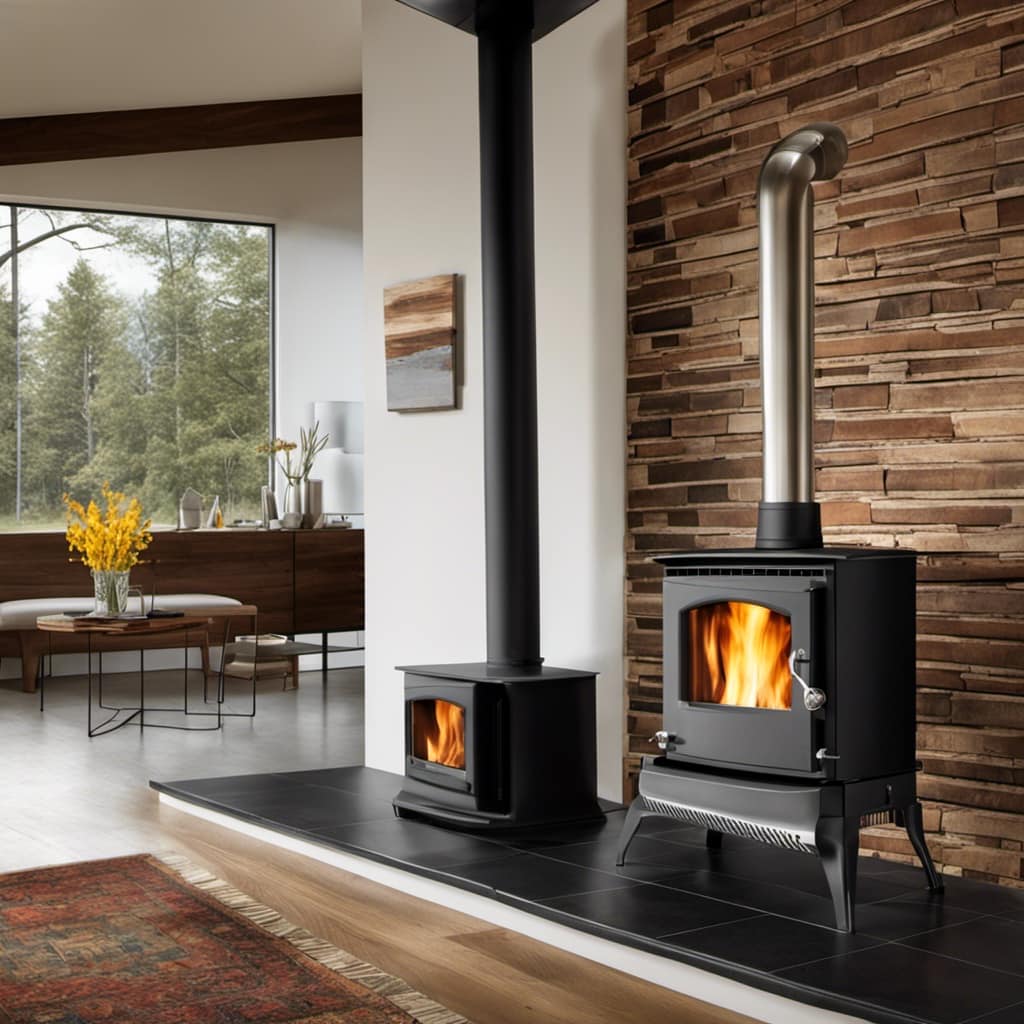
Is It Necessary to Remove All the Rust From My Cast Iron Wood Stove Before Restoring Its Appearance?
I should remove all rust from my cast iron wood stove before restoring it, but leaving some rust for a rustic look is also an option. Vinegar and other natural cleaning products can be used to remove rust.
Can I Use a Wire Brush to Remove Rust From My Cast Iron Wood Stove?
Yes, a wire brush can be used to remove rust from a cast iron wood stove. However, there are alternative methods such as using vinegar or a rust-removing solution that may be more effective.
How Often Should I Maintain My Cast Iron Wood Stove to Prevent Future Rust?
Inspecting my cast iron wood stove for rust regularly ensures its longevity. To prevent rust, I clean and dry it thoroughly after each use, apply a protective coating, and store it in a dry place.
Are There Any Specific Types of Paint or Coatings That Are Recommended for Preventing Rust on Cast Iron Wood Stoves?
There are various types of protective coatings that are recommended for preventing rust on cast iron wood stoves. These coatings form a barrier against moisture and oxidation, ensuring the longevity and appearance of the stove.
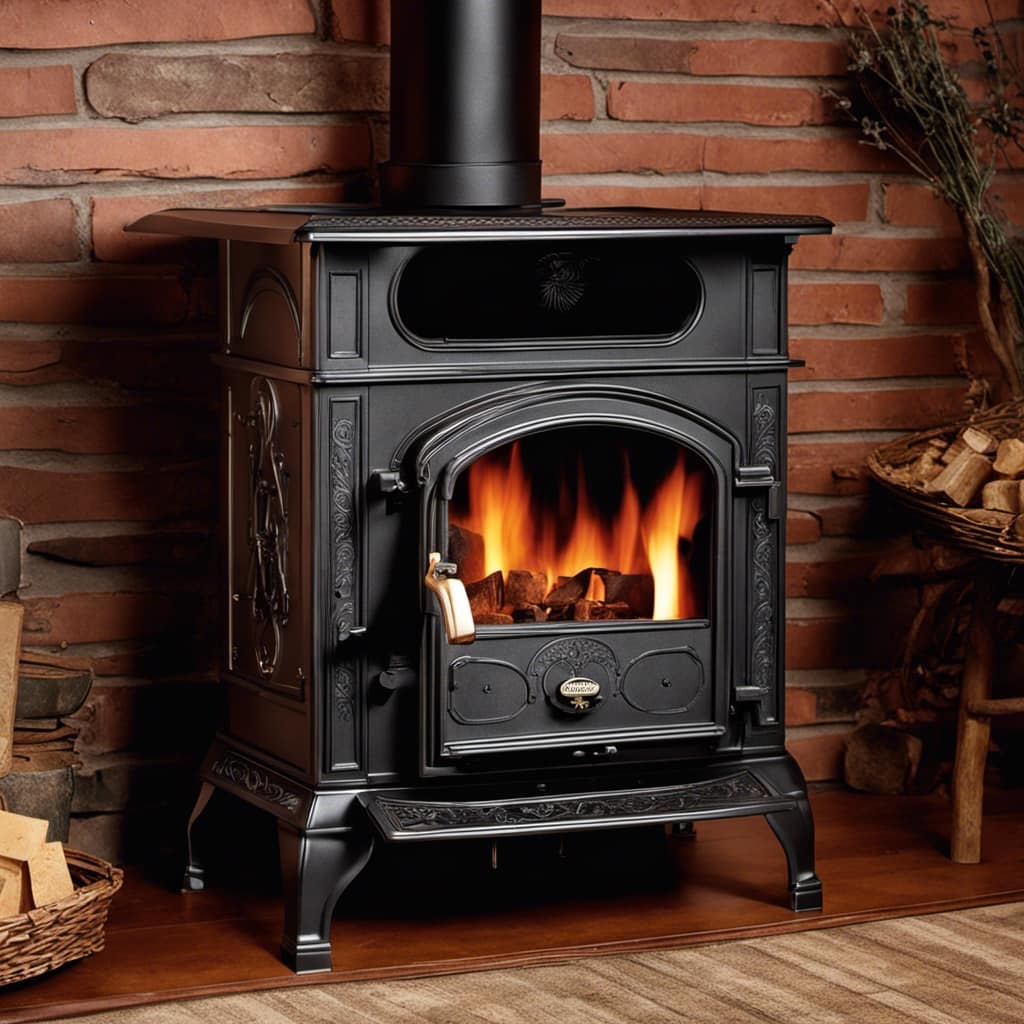
Are the Restoration Methods for a Majestic Wood Stove Similar to a Cast Iron Wood Stove?
Yes, the restoration methods for a majestic wood stove are similar to a cast iron wood stove. Both require thorough cleaning, sanding, and repainting to restore them to their original glory. It’s essential to pay attention to detail to ensure a successful restore majestic wood stove project.
Conclusion
In conclusion, restoring rust on a cast iron wood stove is a technical process that requires careful preparation, removal, and restoration.
By understanding the causes of rust and following the steps outlined in this article, you can bring back the appearance of your stove and prevent future rusting.
Did you know that by properly maintaining your cast iron wood stove, you can enjoy its warmth and beauty for many years to come, creating a cozy and inviting atmosphere in your home?
Growing up surrounded by the vast beauty of nature, Sierra was always drawn to the call of the wild. While others sought the comfort of the familiar, she ventured out, embracing the unpredictable and finding stories in the heartbeat of nature.
At the epicenter of every remarkable venture lies a dynamic team—a fusion of diverse talents, visions, and passions. The essence of Best Small Wood Stoves is crafted and refined by such a trio: Sierra, Logan, and Terra. Their collective expertise has transformed the platform into a leading authority on small wood stoves, radiating warmth and knowledge in equal measure.




